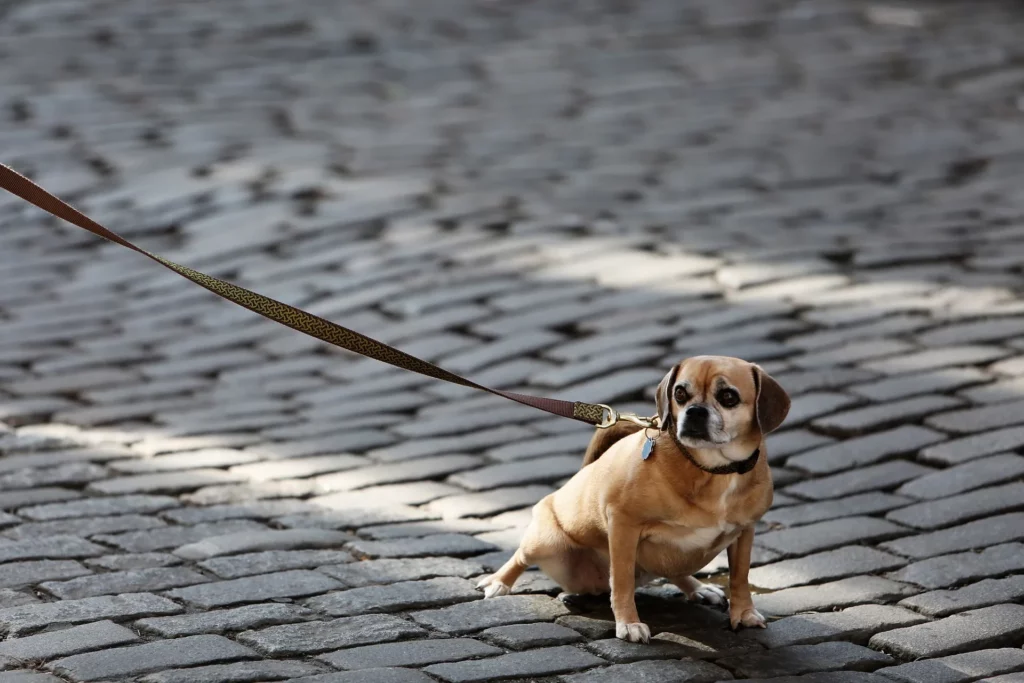Are you curious about knowing the signs that indicate your puppy is scared of you? As you keep reading, you will get to know the clear signs that indicate your puppy is scared of you.

Building a strong and trusting bond with your puppy is essential for a happy and healthy relationship.
Recognizing signs that your puppy may be scared is crucial to address any issues and create a safe environment.
Here, you will get to know the eight common indicators that suggest your puppy may be feeling fearful or anxious around you.
Signs Your Puppy is Scared of You

Here are eight signs that indicate your puppy is scared of you:
1. Your Puppy Avoids Your Presence
If your puppy actively avoids your presence, such as hiding, running away, or seeking shelter, it could be a sign of fear.
Avoidance behaviors indicate that your puppy perceives you as a potential threat, and they are attempting to distance themselves to feel safer.
Also, it’s crucial to respect their need for space, approach them calmly, and gradually build trust through positive interactions.
2. Your Puppy’s Tail is Held Tightly Between Its hind Legs
A tucked tail is a classic sign of fear in puppies.
If your puppy’s tail is held tightly between their hind legs, it suggests anxiety or apprehension.
This is a self-protective behavior, and addressing the cause of their fear is crucial to help them feel more secure.
Pay attention to their body language and work on creating a positive association with your presence.
3. Your Puppy’s Ears Are Pinned Against Their Head
When a puppy is scared, they may pin their ears back against their head.
This is a submissive gesture, signaling discomfort or fear.
Observing the position of your puppy’s ears can provide valuable insights into their emotional state.
Gaining their trust involves creating an environment where they feel safe and supported.
4. Excessive Whining or Yelping From Your Dog
Excessive vocalization, such as whining or yelping, can be a sign of fear or distress.
If your puppy vocalizes more than usual, especially in specific situations or when approached, it may indicate that they feel threatened or anxious.
Identifying the triggers causing their distress and addressing them with patience and positive reinforcement is essential.
5. Your Puppy Exhibit Abnormal Panting and Pacing
Puppies may exhibit panting and pacing when they are scared.
Furthermore, these behaviors can be a response to stress, and it’s essential to identify the triggers causing their discomfort.
Understanding and addressing the source of fear can help alleviate these anxious behaviors.
Creating a calm and secure environment is key to helping your puppy feel at ease.
6. Your Puppy Urinates When Approached or Greeted
Submissive urination is a common behavior in scared puppies.
If your puppy urinates when approached or greeted, it’s a sign of submission and fear.
Remaining calm and using positive reinforcement can help build their confidence over time.
Avoid punishment and focus on building a positive association with interactions.
7. Your Puppy Display Lip Licking and Yawning
Puppies may display calming signals like lip licking and yawning when they are anxious or scared.
These behaviors are attempts to diffuse tension and signal that they are not a threat.
Furthermore, recognizing these signals can aid in creating a more comfortable environment for your puppy.
Responding with gentle and reassuring actions helps build their confidence.
8. Your Puppy Freezes in Place or Make Themselves Appear Small
A scared puppy may freeze in place or cower, attempting to make themselves appear smaller.
These are defensive behaviors indicating a high level of fear.
Furthermore, creating a calm and reassuring environment is essential to help your puppy feel secure and build trust.
Gradual exposure to positive experiences can help them overcome their fears and become more confident.
In conclusion, if you observe any of these behaviors, it’s crucial to approach your puppy with patience, gentleness, and positive reinforcement.
Building trust takes time, so be consistent in providing a safe and nurturing environment to help your puppy overcome their fears and thrive in their new home.
Related Searches:
